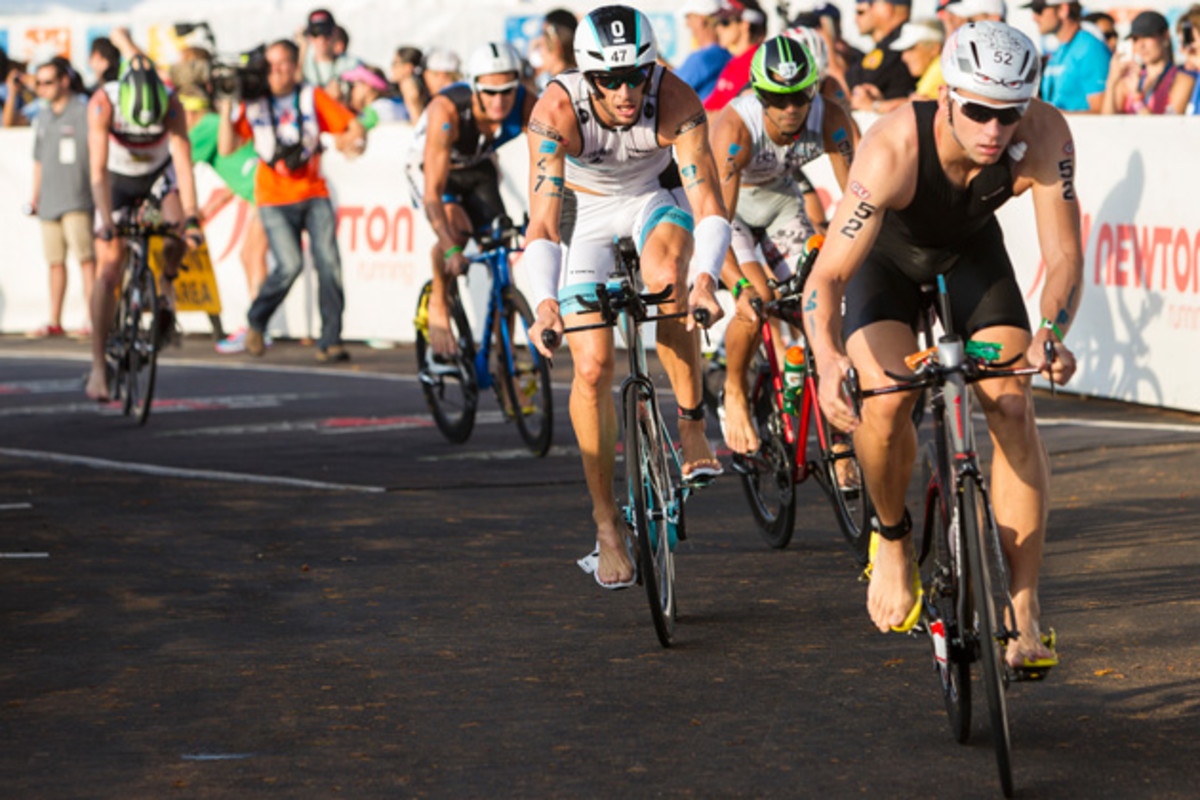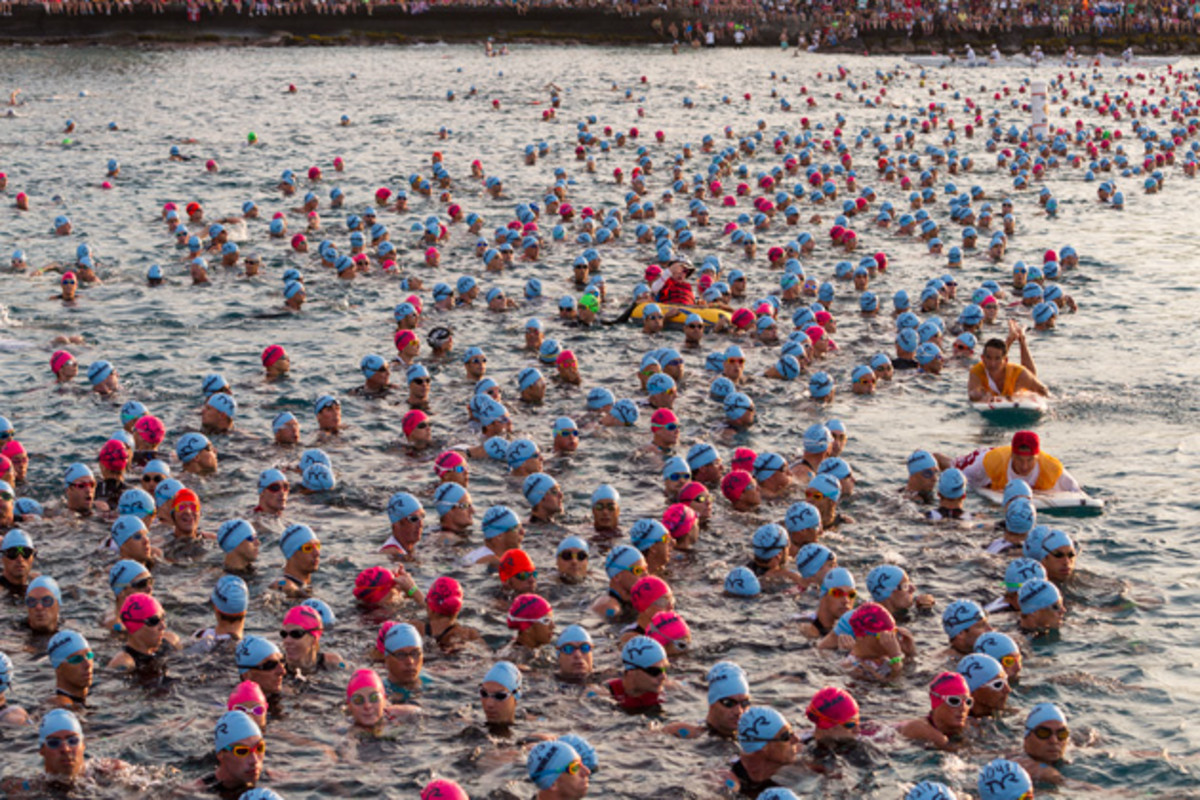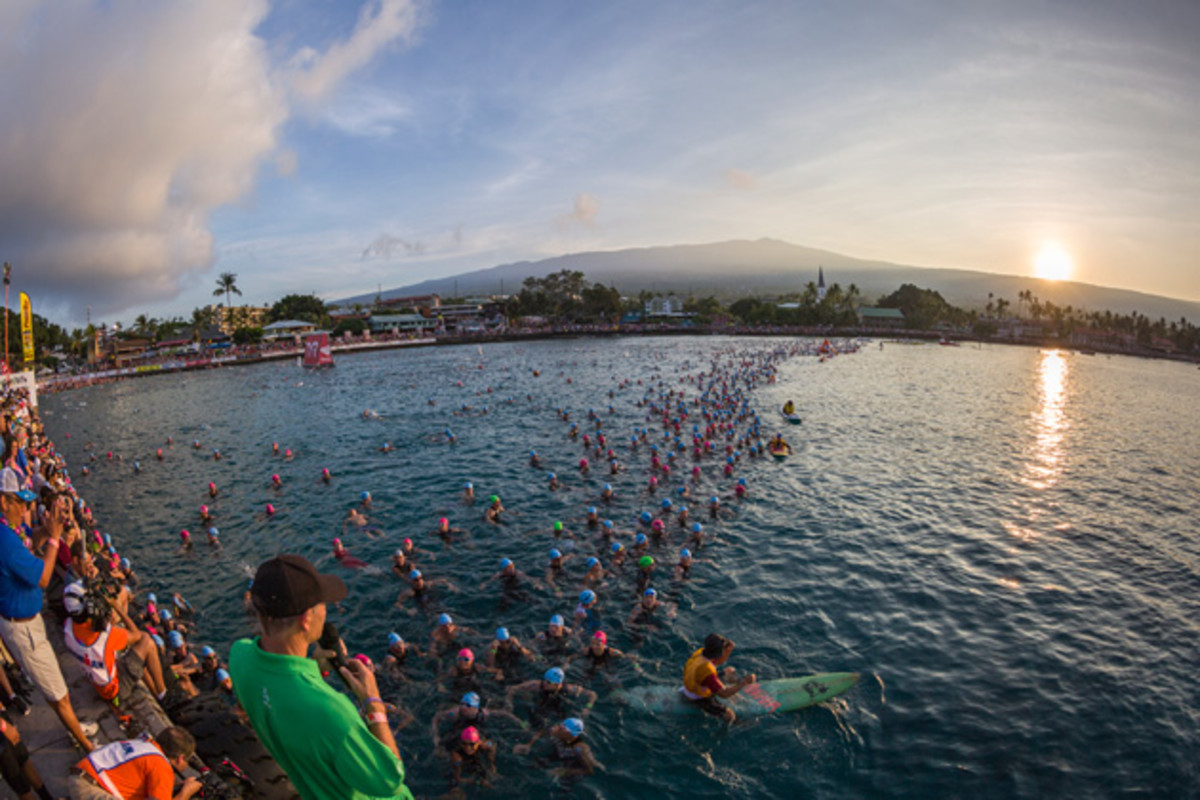Elite athletes get set for the Ironman World Championship in Kona

Picture this: A 2.4-mile swim, while being inadvertently kicked, punched, elbowed and slapped. A 112-mile bike ride with the Hawaiian heat gods pulling your body through, well, hell. And a 26.2-mile marathon with this left in the body's reserve tank—nothing. Simply put, this equals 140.6 miles of soul-challenging, gut-wrenching, adrenaline-driven insanity.
Now, imagine the emotion that accompanies crossing the finish line of the 2014 GoPro Ironman World Championship and being able to brag for the rest of your life. Electric.
“The feeling of winning it, you know, that's really hard to explain—it's a mixture of a lot of emotions,” 2013 Ironman world champion, Frederik Van Lierde of Belgium, tells Edge. “Happiness, of course, but then also relief, accomplishment, unbelief and satisfaction. I raced my own race and in the end I was smart and patient enough to bring it home.”
Ironman Craig Alexander returns from retirement with revamped routine
In what's arguably the world's most demanding single-day sporting event, the Ironman World Championship will give more than 2,000 of the planet's best athletes an opportunity to claim bodily supremacy in Kailua-Kona, Hawaii on Oct. 11.
The race, which must be completed in 17 hours, boasts some of the most ferocious head- and cross-winds in sports. Winds have been known to reach upwards of 45 mph, in conjunction with 95-degree temperatures, high humidity and mostly unavoidable, sweltering sun.
“In triathlon, this is the one race that counts,” says Van Lierde, who’s looking for another victory in this year’s world championship. “[It’s] legendary, so the pressure for the athletes is really high. The weather conditions are really hard—high temperatures and humidity, combined with strong winds that can change all the time. The bike and run course are not flat, at all. It's always slightly up or slightly down, but that wears everyone out by the end of the race. So, the key is to race to your own potential.”

The Ironman World Championship was inaugurated on Feb. 18, 1978, after combining Hawaii’s three toughest endurance races—the 2.4-mile Waikiki Roughwater Swim, 112-mile Around-O’ahu Bike Race and 26.2-mile Honolulu Marathon—and has grown from a initial competitor field of 15.
Now, each year, more than 110,000 professional and age-group athletes attempt to qualify either through worldwide Ironman (full-distance) or Ironman 70.3 (half-distance) races, by legacy or lottery.
This year’s race will feature competitors representing 49 states and 68 countries—the biggest athlete field ever at the world championship. Domestically, the largest number of entrants come from California (123), Hawaii (61), Colorado (58), Texas (48) and New York (43); Internationally, Australia (297), Germany (150), Canada (134), Great Britain (113) and France (88).
Australian native Mirinda Carfrae, who set a women’s course record last year—finishing in eight hours, 42 minutes and 15 seconds—will be defending her title this year in Kailua-Kona. She describes her record-shattering moment in the Hawaiian lava-filled spotlight as exhilarating.
Behind the Body: Pro triathlete Terenzo Bozzone
“Words really don't do that moment justice,” says Carfrae, who’s married to Timothy O’Donnell—last year’s top U.S. finisher. “The years and years of preparation that go into that one day are grueling to say the least, but, honestly, it's all so worth it for that very moment. My goal every year is to be a better athlete than I was the year before. That's what keeps bringing me back. I don't believe that I have reached my potential over the Ironman distance yet.”
Right in the mix of the world’s elite is the U.S.’s most decorated Winter Olympian, eight-time short track speed skating medalist Apolo Ohno, who will now be competing on, well, a very, very long track.
"I’m super excited and nervous,” said Ohno, who conquered his first triathlon in June at Ironman 70.3 Boise. “I’m no stranger to incredible moments in athletics, but this is out of my comfort zone. For me, I have to learn to adapt and get myself into a Zen-like state. I don’t know how far my body will go—that’s the excitement. It’s a true test of internal strength, personal fortitude and mental tenacity.”
Ohno, who will be competing as part of the Built With Chocolate Milk Crew, knows there is a large difference between short track speed skating and endurance racing but has his mind tuned for success on the Big Island.
“The past eight months [of training] have been life-changing,” Ohno says. “There’s something internal that’s rewired as an athlete. No matter how bad I’m hurting, I just have to try and enjoy it. [The Ironman World Championship] is like any big professional sports game—if you can creep into the zone, beautiful things can happen.”
But the Ironman World Championship goes far beyond fostering an atmosphere appropriate for just able-bodied athletes. Enter Alex Zanardi. The Italian Formula One and CART race car driver lost both his legs—above the knees—following a horrific Sept. 2001 wreck in Germany. Zanardi almost died.

“It was literally three days after 9/11, so you can imagine what everyone had on their minds,” says Zanardi, whose heart stopped seven times after the crash and who survived, initially, on less than a liter of blood. “I was leading the race and the cars were coming at about 200mph. My legs were ripped off. I owe the [medical team] my life—that was an incredible group of doctors.”
Now, 13 years later, Zanardi plans to show the world that a disability doesn’t define personal ability, as he attempts to triumph over 140.6 miles of the worst atmospheric conditions known to mankind. Zanardi’s plenty alive.
“I do not have all the talents I used to have before my accident,” Zanardi says, “[but] I haven’t lost all my talents by losing my legs. I’m very excited about the things I can still do, rather than be miserable about the things I can’t. The Ironman is something I can technically [accomplish].”
Other notable competitors include the oldest woman to ever finish an Ironman race—84-year-old nun Sister Madonna Buder, NASA and European Space Agency astronauts Chris Cassidy and Luca Parmitano, and former NFL defensive tackle for the Green Bay Packers and Jacksonville Jaguars Don Davey.
“We prepare, we enjoy the preparation,” Zanardi says. “I know I’m going to be surprised by the heat, humidity and wind. But my strongest point is that my accident didn’t take my curiosity from me. … In my mind, I can do it.”

The Final Hour
There’s a special timeframe that takes place at the Ironman World Championship each year—its final 60 minutes. From 11 p.m.-12 a.m. HST, competitors who have been on the course since early that morning make a last-ditch effort at crossing Alii Drive’s finish line in order to receive the title of an Ironman. Many of them have stories—from physical disabilities, to cancer and beyond. Others are just having a rough race day and are physically destroyed and mentally battered. But none of them care. These athletes don’t allow their setbacks to get in the way of their desires, motivation and goals.
The last 3,600 seconds of the world championship are special. In fact, it’s extremely emotional, not only for the athletes but for the thousands of spectators who remain to cheer them on. As these athletes enter the finishing runway, just seconds away from completing the race, the crowd’s roars of support are deafening. Many of these brave athletes instantly break down in tears as they approach the finish—that’s if they’re even still able to walk.
For the love of CrossFit: Everyone's all in it together at the Games
But as soon as 12 a.m. hits, the Ironman World Championship is over. That’s it. All stats are complete, no matter how many inches of the course they may have left. This race waits for no one.
Even with time expired, there are still those who choose to go through the finish line, and the crowds will still cheer them on, as if seconds remain.
Kailua-Kona is an awesome place, which hosts a surreal event, creating some of the most pronounced life-changing opportunities, ever.
“I love coming back to the finish line before midnight,” Carfrae says. “As the day goes on, it becomes less about high performance and more about our fighting spirit. It's a celebration on life and our limitless potential.”
The Ironman World Championship proves one thing: even the wildest of dreams can turn into reality.
